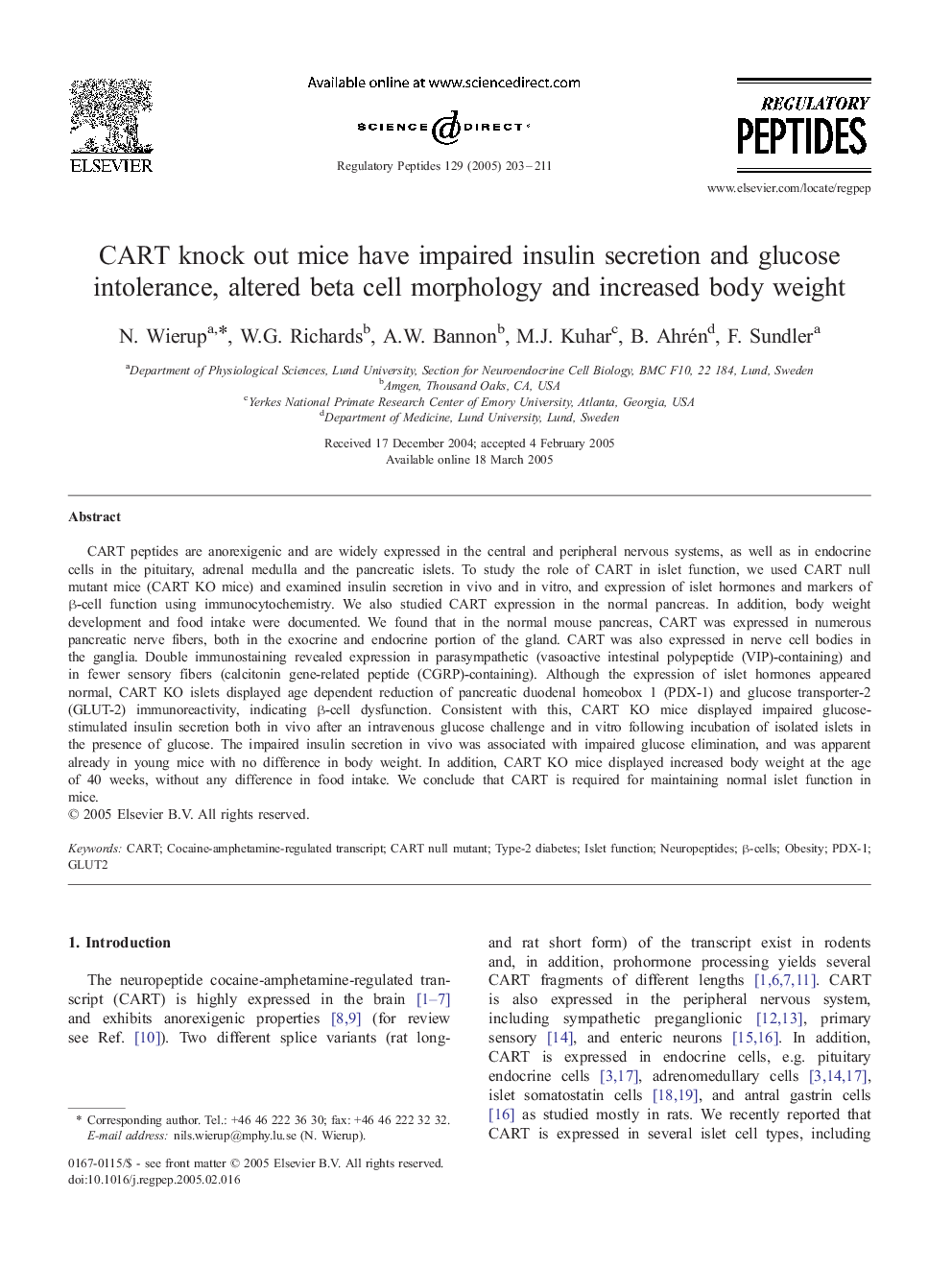| Article ID | Journal | Published Year | Pages | File Type |
|---|---|---|---|---|
| 9894425 | Regulatory Peptides | 2005 | 9 Pages |
Abstract
CART peptides are anorexigenic and are widely expressed in the central and peripheral nervous systems, as well as in endocrine cells in the pituitary, adrenal medulla and the pancreatic islets. To study the role of CART in islet function, we used CART null mutant mice (CART KO mice) and examined insulin secretion in vivo and in vitro, and expression of islet hormones and markers of β-cell function using immunocytochemistry. We also studied CART expression in the normal pancreas. In addition, body weight development and food intake were documented. We found that in the normal mouse pancreas, CART was expressed in numerous pancreatic nerve fibers, both in the exocrine and endocrine portion of the gland. CART was also expressed in nerve cell bodies in the ganglia. Double immunostaining revealed expression in parasympathetic (vasoactive intestinal polypeptide (VIP)-containing) and in fewer sensory fibers (calcitonin gene-related peptide (CGRP)-containing). Although the expression of islet hormones appeared normal, CART KO islets displayed age dependent reduction of pancreatic duodenal homeobox 1 (PDX-1) and glucose transporter-2 (GLUT-2) immunoreactivity, indicating β-cell dysfunction. Consistent with this, CART KO mice displayed impaired glucose-stimulated insulin secretion both in vivo after an intravenous glucose challenge and in vitro following incubation of isolated islets in the presence of glucose. The impaired insulin secretion in vivo was associated with impaired glucose elimination, and was apparent already in young mice with no difference in body weight. In addition, CART KO mice displayed increased body weight at the age of 40 weeks, without any difference in food intake. We conclude that CART is required for maintaining normal islet function in mice.
Related Topics
Life Sciences
Biochemistry, Genetics and Molecular Biology
Biochemistry
Authors
N. Wierup, W.G. Richards, A.W. Bannon, M.J. Kuhar, B. Ahrén, F. Sundler,
